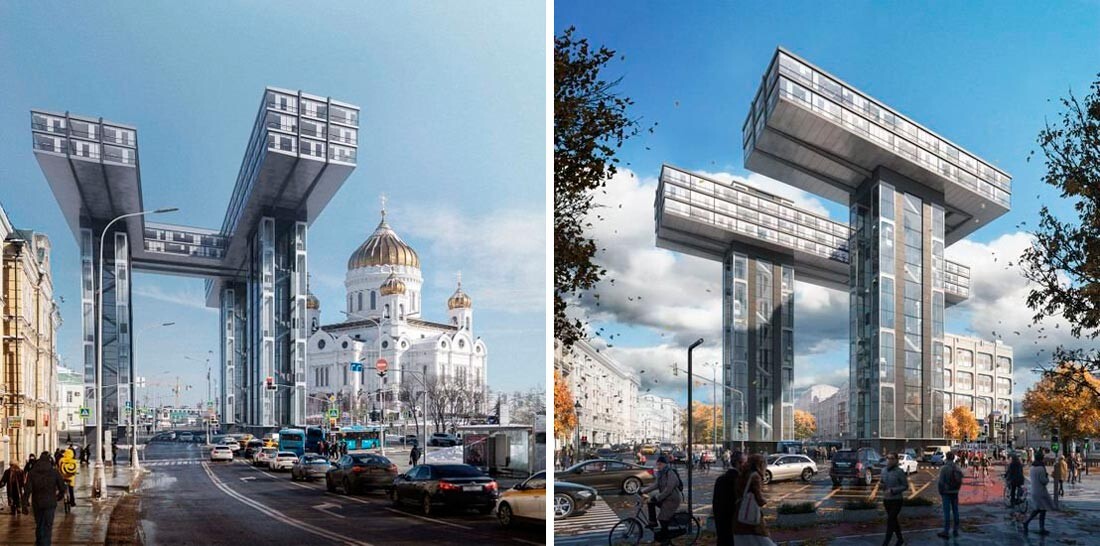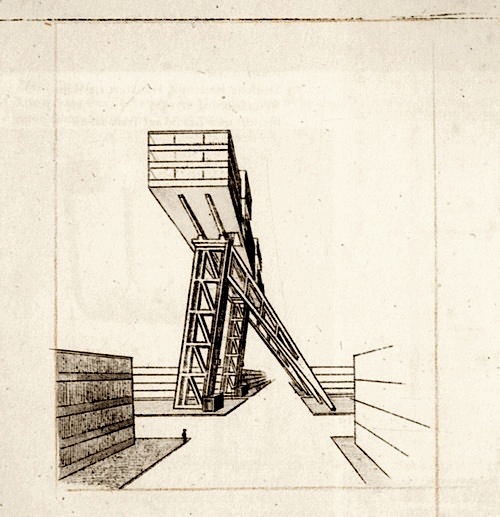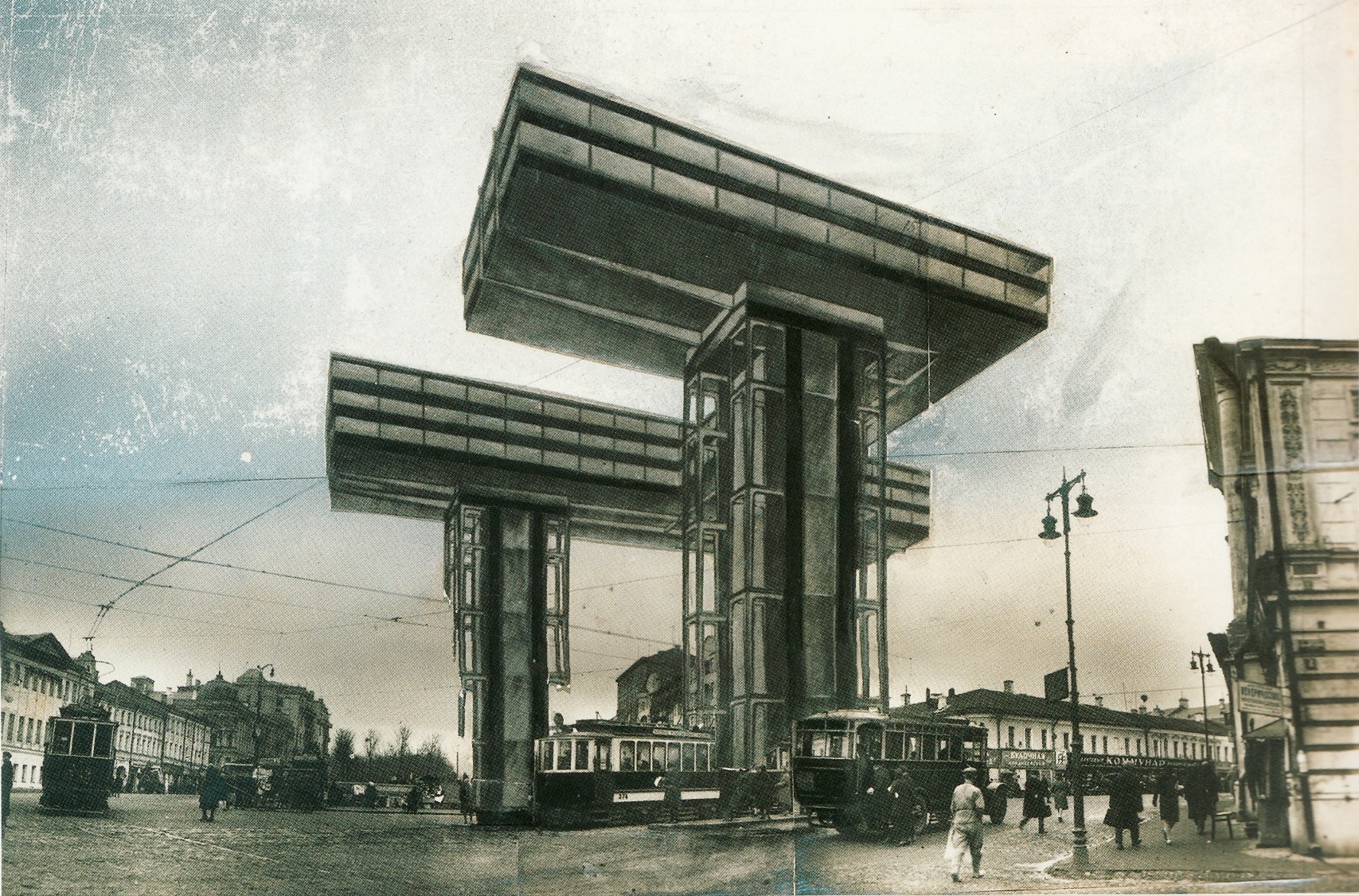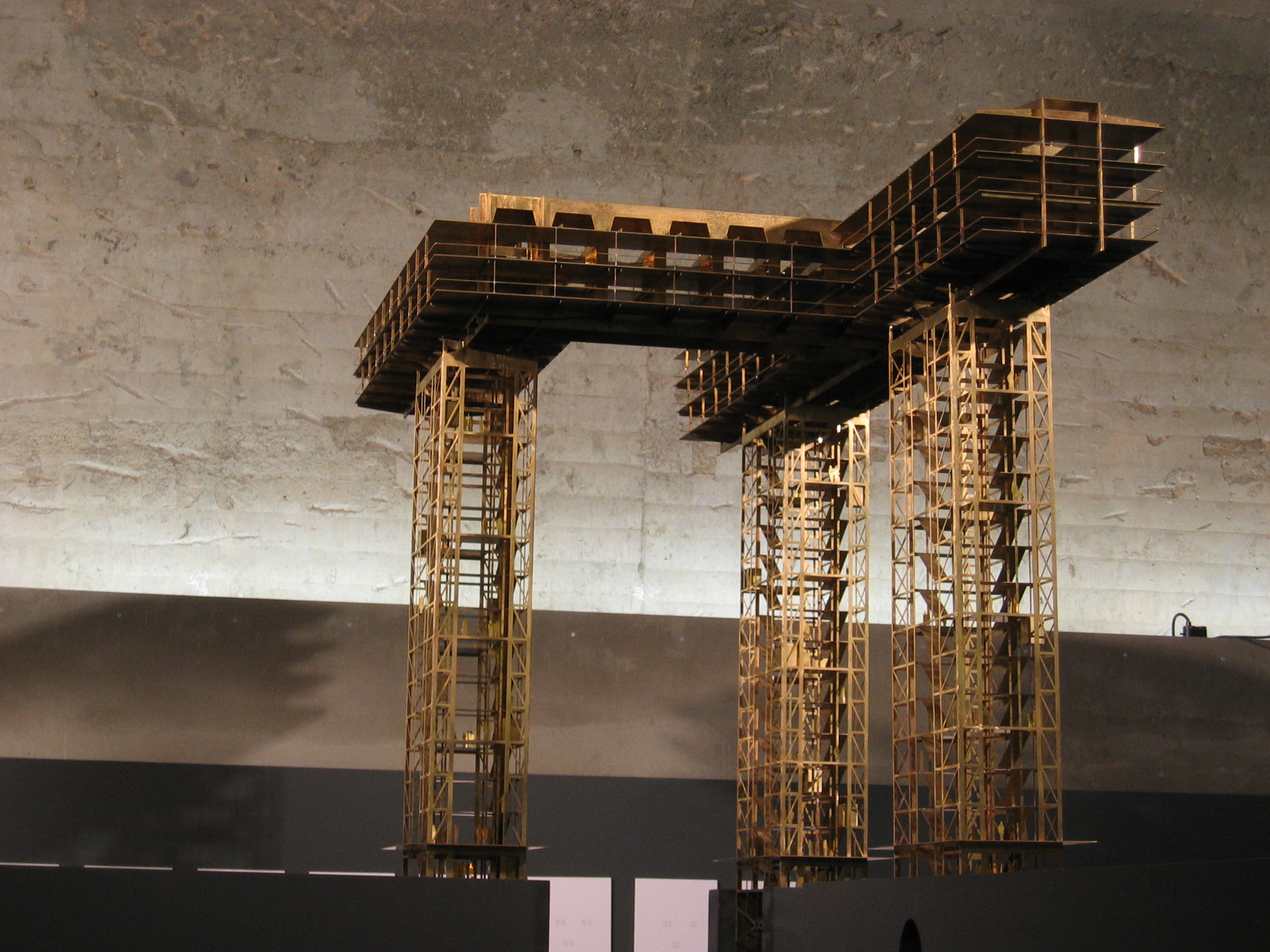
El Lissitzky’s horizontal skyscrapers how would they have looked now
Before the outbreak of World War I and his return to Russia, El (Lazar Mordukovich) Lissitzky studied architecture and engineering in Germany and traveled in Europe absorbing the new imagery of Cubism, Futurism, and Expressionism.. El Lissitzky (Russian, Pochinok 1890-1941 Moscow) ca. 1926. In the Studio. El Lissitzky (Russian, Pochinok.

El Lissitzky (18901941) Architectural Review
Lazar Markovich Lissitzky (Russian: Ла́зарь Ма́ркович Лиси́цкий, ; 23 November [O.S. 11 November] 1890 - 30 December 1941), better known as El Lissitzky (Russian: Эль Лиси́цкий; Yiddish: על ליסיצקי), was a Russian artist, designer, photographer, typographer, polemicist and architect.He was an important figure of the Russian avant-garde, helping.

Lissitzky, Wolkenbügel (1924) The CharnelHouse
Beat the Whites with the Red Wedge is a propaganda poster designed by El Lissitzky using the abstract visual language of Suprematism, an art movement founded by Kasimir Malevich in 1915. Made in support of the efforts of the Bolshevik Red Army to overcome the anti-communist White Russians, the poster creates a powerful dynamic composition using basic geometric shapes in red, white, and black.

El Lissitzky Конструктивизм, Художники, Геометрия
Widely remembered as a major figure in modern art, El Lissitzky (1890-1941) was an architect by metier. The accepted interpretation of his career is that architecture was only a minor pursuit compared to his art. This dissertation tests the hypothesis that architecture was, in fact, the backbone of his collective oeuvre..

El Lissitzky, Proun IE (city), 1921 Composition art, Black and white
lissitzky-el-russia-an-architecture-for-world-revolution-1970 Identifier-ark ark:/13960/t6tz5s26r Ocr tesseract 5..-beta-20210815 Ocr_autonomous true Ocr_detected_lang de Ocr_detected_lang_conf 1.0000 Ocr_detected_script Latin Cyrillic Ocr_detected_script_conf 0.9580 0.0288 Ocr_module_version 0.0.13 Ocr_parameters-l eng+kir+rus+ltz+deu+Latin.

These Six Amazing Unbuilt Landmarks Could Have Changed Moscow Forever
Follow Russia Beyond on Instagram. Cloud Iron, or Wolkenbügel, was the name of the project of eight horizontal skyscrapers by architect El Lissitzky that were supposed to appear in the most.

El Lissitzky’s of Abstraction” odin Constructivism, Design
El Lissitzky was a Russian-born designer and artist linked with various MODERNIST organisations, including Suprematism and DE STIJL. Education. He studied architecture at the Technische Hochschule in Darmstadt (The Darmstadt University of Applied Sciences) from 1909 to 1914 and Riga Polytechnic from 1915 to 1916. Biography

Lissitzky, Cloud Hanger, 192325 Modern architecture, Architecture
El Lissitzky (1890-1941) was an artist, designer, photographer, typographer, polemicist and architect. He was an important figure of the Russian avant-garde, helping develop suprematism with his mentor, Kazimir Malevich, and designing numerous exhibition displays and propaganda works for the Soviet Union.His work greatly influenced the Bauhaus and constructivist movements, and he experimented.

WORKING TITLE DSDOCUMENTS EL LISSITZKY WOLKENBÜGEL
El Lissitzky's Art and Architecture. At the start of his career, El Lissitzky's art was figural or based on recognizable forms like people and animals. But by the early 1920s, the young artist had.
MONOCHROMATIC AXONOMETRIC Constructivist Lissitzky
Lazar Markovich Lissitzky (Russian: Ла́зарь Ма́ркович Лиси́цкий, listen ⓘ; 23 November [O.S. 11 November] 1890 - 30 December 1941), better known as El Lissitzky (Russian: Эль Лиси́цкий; Yiddish: על ליסיצקי), was a Russian artist, designer, photographer, typographer, polemicist and architect. He was an important figure of the Russian avant-garde.

El Lissitzky’s “Architecture in the USSR” (1925) The CharnelHouse
Introduction Lazar Markovich Lissitzky (Russian: Ла́зарь Ма́ркович Лиси́цкий, ; 23 November [O.S. 11 November] 1890 - 30 December 1941), better known as El Lissitzky (Russian: Эль Лиси́цкий; Yiddish: על ליסיצקי), was a Russian artist, designer, photographer, typographer, polemicist and architect.

Lissitzky, Wolkenbügel (1924) The CharnelHouse
El Lissitzky (born November 11 [November 23, New Style], 1890, Pochinok, near Smolensk, Russia—died December 30, 1941, Moscow) Russian painter, typographer, and designer, a pioneer of nonrepresentational art in the early 20th century. His innovations in typography, advertising, and exhibition design were particularly influential.. Lissitzky received his initial art training in Vitebsk (now.

On Lissitzky
El Lissitzky (1890-1941) - Architectural Review. Since 1896, The Architectural Review has scoured the globe for architecture that challenges and inspires. Buildings old and new are chosen as prisms through which arguments and broader narratives are constructed. In their fearless storytelling, independent critical voices explore the forces that.

Horizontal Skyscraper El Lissitzky Russian Architecture, Architecture
The Reconstruction of Architecture in the Soviet Union (1929) Old cities — New buildings The future and utopia El Lissitzky (1929). The creation of an office complex that would respond to the demands of the new times within the context of the old Moscow urban fabric was the basic idea leading to the concept of the so-called "sky-hook."

Detail from proun room by El Lissitzky Art and architecture
Summary of El Lissitzky. Russian avant-garde artist El Lissitzky, made a career of utilizing art for social change. In fact, he made the very first abstract work with a political message.. For Lissitzky, architecture was an enduring passion. Ironically, in some regards his passion for architecture was also his greatest challenge to his own.

Architectural Myths 12 The Daring Cantilever misfits' architecture
El Lissitzky was a prominent Russian multidisciplinary artist and designer in the first half of the 20th century. For Lissitzky, the medium was merely a vessel in service of his larger goals. His works spanned any and every medium he saw fit to communicate his message, commonly employing photography, architecture, and typography in his quest to.